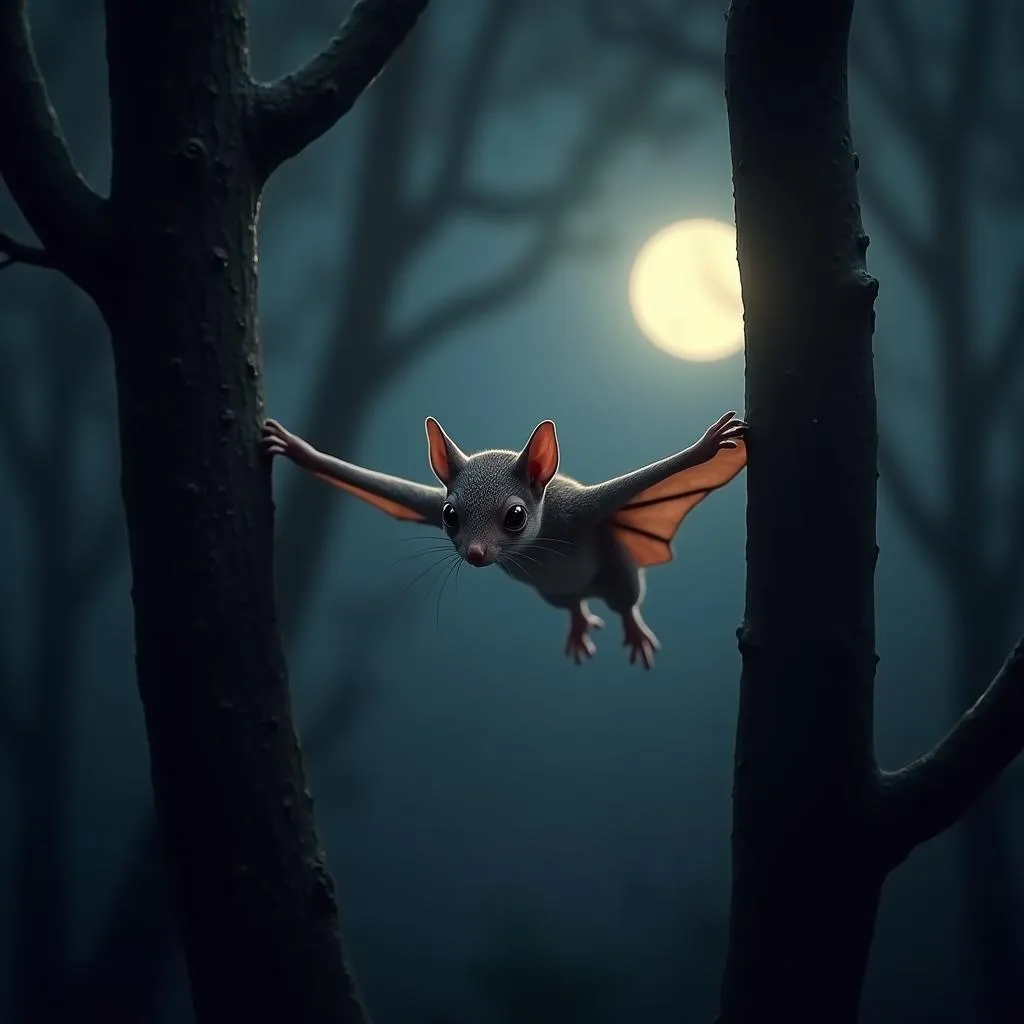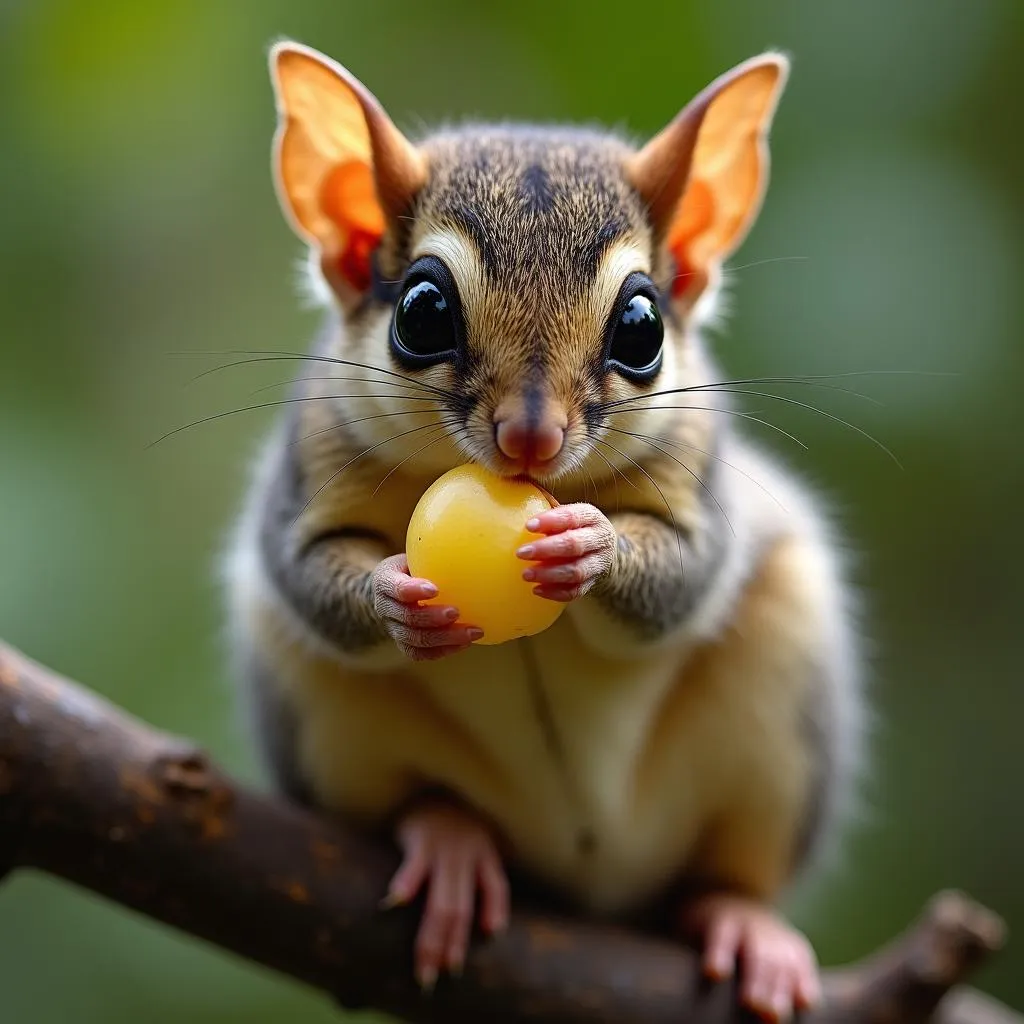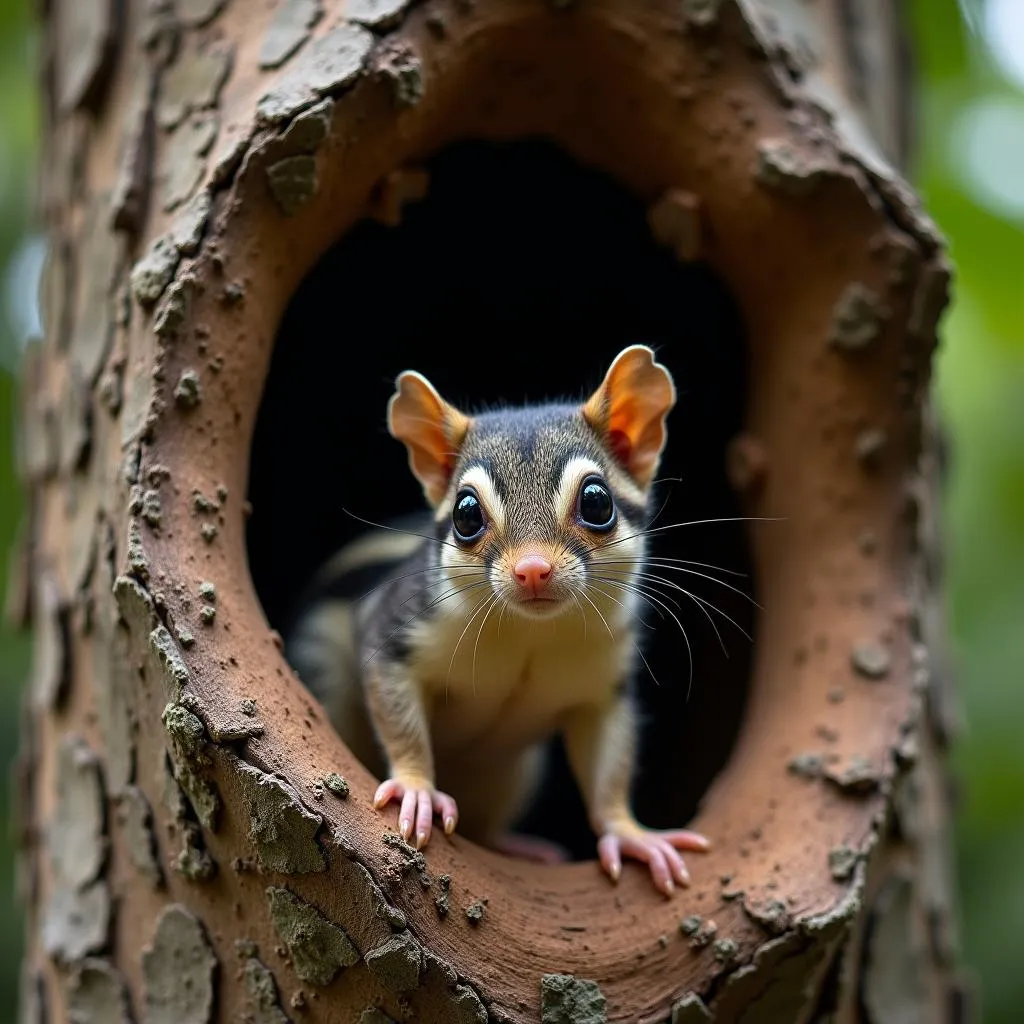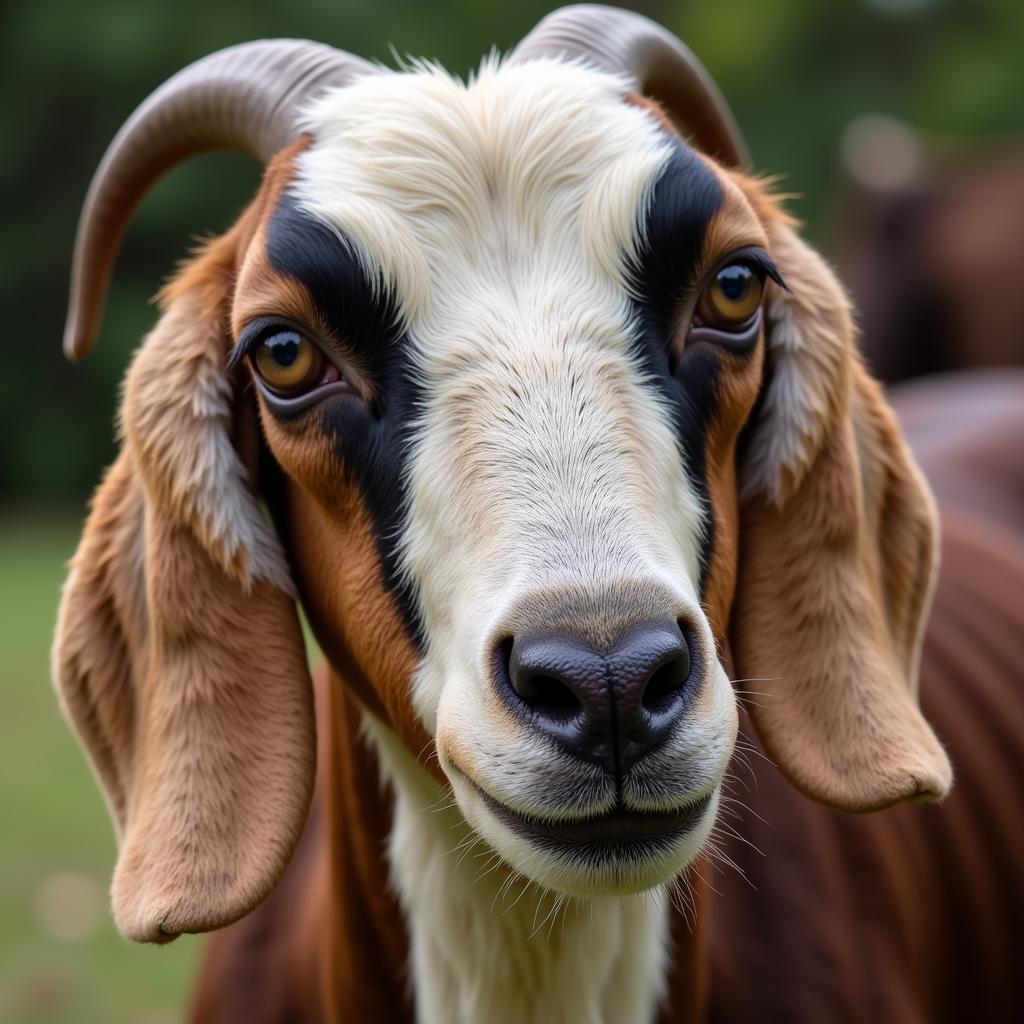African Flying Squirrels: Gliding Through the Night
African Flying Squirrels, contrary to their name, don’t actually fly. Instead, they glide effortlessly through the air, using a unique membrane called a patagium. This thin, furry membrane stretches from their wrists to their ankles, acting like a parachute and allowing them to cover impressive distances between trees.
These nocturnal creatures are found in various parts of sub-Saharan Africa, inhabiting woodlands and forests. Their large, dark eyes are perfectly adapted for navigating the darkness, and their soft, dense fur provides insulation during cool nights.
 African flying squirrel gliding between trees at night
African flying squirrel gliding between trees at night
Masters of the Night: Adaptations for Gliding and Foraging
African flying squirrels have evolved a suite of adaptations that make them perfectly suited for their arboreal lifestyle. Their lightweight bodies, along with their flexible patagium, allow for incredible maneuverability in the air. They can steer with remarkable precision, using their flattened tails as rudders to navigate through dense foliage.
Their diet consists mainly of fruits, seeds, insects, and tree sap. They play a crucial role in seed dispersal, contributing to the health and diversity of the forest ecosystem. Their sharp claws and agile bodies make them adept climbers, allowing them to access food sources high in the canopy.
 African flying squirrel eating fruit on a tree branch
African flying squirrel eating fruit on a tree branch
Social Structures and Communication
While primarily solitary creatures, African flying squirrels do engage in limited social interactions. They communicate with each other through a variety of vocalizations, including chirps, whistles, and hisses. These calls serve to warn of predators, attract mates, and maintain territories.
Their breeding habits vary depending on the specific species and geographic location. However, females typically give birth to litters of 2-4 young ones in tree hollows lined with leaves and fur. The young squirrels are born blind and hairless, relying entirely on their mothers for warmth and nourishment.
Conservation Status and Threats
The conservation status of different African flying squirrel species varies. While some populations remain relatively stable, others face threats from habitat loss, hunting, and the pet trade. Deforestation due to agricultural expansion and logging activities is a significant concern.
“Protecting the forests where these incredible creatures reside is paramount,” says Dr. Amani Kioko, a wildlife biologist specializing in African squirrel species. “Educating local communities about the importance of conservation and promoting sustainable practices is crucial for their long-term survival.”
 African flying squirrel peeking out of its nest in a tree hollow
African flying squirrel peeking out of its nest in a tree hollow
Conclusion
African flying squirrels are fascinating creatures, showcasing the incredible diversity and adaptability of the animal kingdom. Their unique gliding abilities and nocturnal lifestyle make them a captivating subject of study for scientists and nature enthusiasts alike. By understanding the threats they face and actively participating in conservation efforts, we can ensure that these gliding wonders continue to grace the African night sky for generations to come.

